| ALL |
|
POSTMODERNISM
| OVERVIEW |
|
| |
Postmodernism became an intellectual buzzword within architectural circles in the 1980s and 1990s. Traced to literary theory, where Postmodernism was used to refer to new modes of fiction characterized by self-reflexivity, linguistic play, and the use of referential frames within frames (the “Russian doll” effect), the term rapidly entered other fields, such as the visual arts and architecture, to end up as a common denominator to describe the cultural climate of the last decades of the 20th century. The precise content of the term has always been elusive—the more it was in vogue, it seemed, the less precise its meaning. In architecture, however, Postmodernism has been understood to refer to a formal language that could clearly be distinguished from its modernist predecessor because of its free use of historical, vernacular, or populist references. A closer look, however, reveals that also in architecture, the confusing connotations and paradoxical overtones of the term “Postmodernism” often gain the upper hand.
Important Publications and Exhibitions
Charles Jencks, in his widely influential The Language of Postmodern Architecture (1977), argued that modern architecture had run its course. He even provided a precise “death” of modernity: in St. Louis, Missouri, on 15 July 1972, at 3:32 p.m., when several of the 14-story slab blocks that together formed Pruitt Igoe, a prize-winning social housing scheme designed by Minoru Yamasaki and built only 20 years before, were demolished—the final proof, thought Jencks, that modern architecture could not live up to its promises and failed to provide its users with a liveable environment. Lacking in modern architecture, Jencks stated, was communication: modern architecture did not conceive of buildings as conveyors of meaning and did not treat architecture as a language. Modern architecture’s ideals of purity, transparency, and functional efficiency (elements of the established International Style) failed to relate to a general public. A Postmodernism characterized by meaningful architecture that was sensitive to its urban context would provide the substitute. For Jencks the most important feature of this new architecture was its “double coding”: Postmodernist buildings communicate on two levels at once—they convey a specific meaning to a minority public of experts (other architects, art historians, and the like), who recognize formal references to historical styles, innovations, or ironic gestures, while at the same time they communicate with a larger public by invoking images that satisfy feelings of nostalgia and continuity. Whereas modernism rejected all popular references as kitsch, Postmodern architecture would rather embrace the input of mass culture.
The criticism of modern architecture formulated by Jencks was not completely new. In the 1960s, there had been a growing literature that critiqued modern architecture and urbanism for their abstract and anonymous character, their paternalistic attitudes, and their negation of history. In 1961 Jane Jacobs published her widely influential book The Death and Life of Great American Cities, in which she attacked modern urbanism for failing to design liveable and safe environments. She argued that modern architecture’s hatred of the street was especially noxious, for it led to the creation of monotonous, monofunctional, utterly boring, and even unsafe dwelling environments in which social interaction was hampered rather than stimulated. Robert Venturi complained in his 1966 Complexity and Contradiction that modernist ideals such as purity or directness led to a kind of order that was rigid and stereotypical, whereas the complexity and contradictions of ambivalent formal languages, such as mannerism, were much more capable of evoking a continuing interest. Instead of the puritanically moral language of orthodox modern architecture, he preferred “hybrid” rather than pure elements, compromising rather than clean, distorted rather than straightforward, and ambiguous rather than articulated.
Aldo Rossi, in L’architettura della città (1966; The Architecture of the City, 1982), claimed that the modernist precept “form follows function” was naïve. Study of the history of the city reveals a persistence of historical forms rather than constant innovation: urban forms tend to endure, even if their functions wither; this persistence gives rise to the emergence of new functions. For Rossi the city (and context) is a crucial phenomenon at the heart of architecture. A contemporary architecture, therefore, has to base itself on the morphotypological study of the city (morphology referring to the historical development of the form of the city, typology to the study and classification of types in their relationship to the urban form).
The books of Jacobs, Venturi, and Rossi are some of the earliest significant publications that analyzed a nascent Postmodernism. Other publications, such as Sibyl Moholy-Nagy’s Matrix of Man (1968), Peter Blake’s Form Follows Fiasco (1977), and Colin Rowe’s and Fred Koetter’s Collage City (1978) exerted influence. For Rowe and Koetter, it was clear that modern architecture’s utopian beliefs had grown outdated. They proposed a “collage city,” in which the modernist technique of collage would bring together several urban fragments stemming from different traditions. The collision of these fragments would lead to an amalgam of simultaneous order and disorder that would allow for diverging interpretations, thus opening up the city for choice and freedom, as well as multiplicity and ambiguity.
Another important impulse during the 1960s and 1970s concerned the interest in popular and vernacular architecture. These populist architects criticized modern architecture for its paternalistic, bureaucratic, and antidemocratic character. Publications such as Sibyl Moholy-Nagy’s Native Genius in Anonymous Architecture (1957), Bernard Rudofsky’s Architecture without Architects (1964), or Amos Rapoport’s House, Form and Culture (1969) provoked a genuine interest among a whole generation of architects for such factors as culture, site, climate, or conventions, which had been more or less neglected within modernism. John Turner (1968) pointed to squatter settlements as “an architecture that works” (p. 355), arguing that the housing problems in developing countries should be solved by a bottom-up approach, relying on the experiences of selfbuilders in squatter settlements, rather than by the top-down approach favored by largescale modernist housing programs. Advocacy planning and participatory design gained influence in the United States as well as in Europe. At the same time, there was a growing interest in built products such as Levittown, New York, or Las Vegas. This trend culminated in Venturi, Scott Brown, and Izenour’s Learning from Las Vegas (1972), a book in which they pleaded for the ordinariness of everyday life.
That Postmodern architecture also sought a different relation with history was evidenced at the 1980 Venice Biennale The Presence of the Past, organized by Paolo Portoghesi, who characterized the evolution away from modernist orthodoxy as “the end of prohibition.” The exhibition featured work by Venturi, Charles Moore, Hans Hollein, and Ricardo Bofill, as well as Aldo Rossi’s Teatro del Mondo, a small wooden theater, built on a ship, echoing the shape of the monuments of the San Marco basin where it was temporarily moored. Another important, dually sited exhibition—“Revision der Moderne” (Frankfurt, 1984) and “Nouveaux Plaisirs d’Architectures” (Paris, 1985)— included the work of Peter Eisenman, Frank Gehry, Rem Koolhaas, Oswald M.Ungers, Hollein, Moore, Rossi, and Venturi. Curator Heinrich Klotz argued that Postmodern architecture meant not a rejection but rather a revision of modern architecture, thus aiming at a third way between reaction and rupture. For Klotz, Postmodernism embraced fiction alongside function: a building is not just an instrument but also a work that involves representation, poetics, and metaphor.
Tendencies within Postmodernism
A dominant distinguishing strand of Postmodernism is that of the vernacular, relying on popular images and references. Robert Venturi’s first building, the house for his mother, Vanna Venturi (Philadelphia, 1962), cleverly played with the archetype of the house. Its front facade looks appealingly conventional, but a closer look reveals that the interior layout is quite complex and that what at first appears as a rather large chimney in fact hides a shifted stair and a small extra room. The house features ornamental strips, mullion windows, and arches—elements that were banished from any modernist building.
Charles Moore, Michael Graves, and Robert Stern have contributed a great deal to Postmodern architecture in the United States. Moore’s Piazza d’Italia (New Orleans, 1979) is without doubt one of the most influential projects exemplary of a populist and pluralist approach. The Piazza was commissioned to reflect the identity of the Italian community in New Orleans. Moore combined several references to Italy in the design, such as columns in an Italian order, a raised platform in the form of the Italian boot, and a fountain. At the same time, the design was built in a highly unusual combination of materials, using not only marble and stainless steel but also neon and cardboard. Michael Graves’s Portland Public Service Building (1982) in Portland, Ohio, and his Humana Tower (1985) in Louisville, Kentucky, show how a Postmodernist language can be applied to the facades of office buildings that in terms of program and plan differ only slightly from their modernist predecessors. Stern did a similar exercise with his Point West Place (1984) in Framingham, Massachusetts, but is also capable of reinterpreting more faithfully historical languages, such as the Shingle style (e.g., Bozzi Residence, 1983, East Hampton, Long Island).
Whereas in the United States the populist tendency relies on play with formal elements, the best-known examples of participatory design are found in Europe; namely, Lucien Kroll’s building for the Medical Faculty of the Catholic University of Louvain (Brussels, 1974) and Ralph Erskine’s Byker housing project (Newcasde upon Tyne, 1981). Kroll’s “La Mémé,” as it is affectionately called, provides its student inhabitants with the possibility of continuously redesigning the distribution of its interior spaces. The building’s facades appear as hybrid collages bringing together a surprising diversity of styles and references, implying that behind these walls a similar diversity of students has found shelter. Erskine’s housing project in Newcastle resulted from a laborious design process involving the future inhabitants. Where the project faces a highway at its northern side, it features a very high wall with only a few openings. It shows a much more friendly face toward the other side, sprinkling the facade with a multitude of balconies made of wood and painted in bright orange and blue.
Throughout the 1980s, however, in Europe the neorationalist tendency became eclipsed by the populist model. Following the theoretical lead of Ross’is Architecture of the City, neorationalism favored an urban architecture imbued with analyses of historical urban fabrics and forms. Instead of inventing new prototypes, neorationalists argued, new contributions to the city should be based on the rational transformation of existing types in accordance with their historical and urban context. This approach has been highly successful in the work of Aldo Rossi, Giorgio Grassi, Rafael Moneo, and Oswald Ungers. For example, Rossi’s Modena Cemetery (1985) combines multiple references to urban forms and to symbols of life and death with an abstracted language to convey a feeling of melancholy. Moneo designed the impressive Roman Museum (1983) in Merida, where he included archaeological findings in the foundations of the building and managed to provide the whole with a magnificent sense of Roman grandeur. Ungers’s highly regarded Deutsches Architektur Museum (Frankfurt am Main, 1985) reinterpreted the tradition of the urban villa by including in a bourgeois residence alongside the Main River a house within a house, thus evoking a fundamental architectural theme appropriate for a museum of architecture.
Whereas the neorationalists saw their work as the continuation and transformation of a progressive historical genealogy, there were other protagonists of the so-called reconstruction of the city who advocated a straightforward return to classicism. Authors such as Demetri Porphyrios, Maurice Culot, and Leon Krier—with the occasional support of England’s Prince Charles—argued that only a faithful reproduction of 18th-century typologies and formal idioms would be capable of providing a true sense of urbanity. According to such critics, industrialization and modernization had deprived architecture and the city of their very essence, turning architecture into a soulless repetition of the same and the city into a loose conglomerate of freestanding buildings without any streets or squares in which public life could unfold. The desire for a return to preindustrial forms has led to various built projects in Brussels (the complex in the Lakense Straat [1994] designed by different architects commissioned by the Archives d’Architecture Moderne), London (Richmond Riverside [1988] by Quinlan Terry), and elsewhere. Its most successful exponent might well be the increasingly influential movement of New Urbanism in the United States, which combines urbanist ideas similar to those of Léon Krier and Culot with an architectural imagery that refers to the American colonial tradition of small towns.
A classicist revival can also be recognized in the work of the Belgian Charles Vandenhove, who built in Belgium, Holland, and France. Vandenhove began his career developing an eloquent modernist language in a series of individual houses and larger projects, gradually transforming this language toward a more classicist idiom. Vandenhove’s Theatre des Abesses complex (1996) in Paris faithfully finishes the urban block it is part of, looking as if it has always been there. The buildings facing the street are inconspicuous, built in the Parisian idiom familiar since the mid-19th century. The theater, lying in the back, is more outspoken, featuring a Palladian entrance with a fronton and a vestibule with pillars.
In the United States, Philip Johnson has, with his partner John Burgee, occasionally designed projects that were faithful replicas of historical examples (e.g., his College of Architecture [1985], Houston, Texas, a replica of a project by Claude-Nicholas Ledoux), but his Postmodernist stage is rather characterized by a free and informal use of historical references (such as his AT&T Building [1984], New York).
There are also many architects whose work is clearly Postmodernist but who cannot be categorized straightforwardly in any of the previously mentioned classifications (populist, neorationalist, or classicist). Ricardo Bofill of Spain, for example, is well known for his unorthodox use of classicist elements (columns, pilasters, pediments, cornices, and moldings) within social housing schemes. James Stirling combined classicist references with highly populist elements in his Neue Staatsgalerie (1984, with Michael Wilford) in Stuttgart, a building that can be seen as exemplary of Postmodernism’s multiple references, urban sensitivity, and witty connotations. Austrian Hans Hollein’s Abeitburg Museum (1982) in Mönchengladbach, Germany, sensitively interacts with its urban context, reinterpreting several building types and combining these into a difficult whole that nevertheless has a clear signature. In Japan and in Southeast Asia, an eclectic attitude has been especially prolific, as exemplified in the work of Arata Isozaki. His Tsukuba Civic Center (Tsukuba, Japan, 1983) features a replica of Michelangelo’s Campidoglio that is sunk under a plaza among other Western sources.
Such examples underline Jencks’s initial characterization of Postmodernism as a radical eclecticism. Postmodern architects are free to borrow elements from the context, from the past, from classicism, from popular culture, and from the architectural language and concepts of modernism. The latter makes up for a confusing connotation, for it means that sometimes the work of architects such as Richard Meier or Rem Koolhaas has been labeled Postmodernist, although it clearly continues a modernist tradition (be it with ironic or even cynical overtones).
The Postmodern Condition
The common element among the different strands of Postmodernism in architecture seems to be the rejection of the narrow focus on functionality and efficiency that characterized modernism. Postmodernity is brought about by the loss of the grand narratives of modernism: the modernist ideal of an increasing rationality that would result in progress and emancipation for all mankind has lost its validity and is seen as an illusion. In this sense, Jencks’s diagnosis of Postmodernism in architecture corresponds with the French philosopher Jean-François Lyotard’s interpretation of La Condition Postmoderne (1979; The Postmodern Condition). According to Lyotard, the main feature of the Postmodern condition is that the grand narratives (in literature, history, art, and philosophy) have come under scrutiny. Grand narratives are collectively shared ideas and convictions that are communicated by repeatedly told stories that grant legitimacy to institutions and values that form the basis of society. Such grand narratives, Lyotard argues, have lost their self-evident character, and their importance tends to become devalued in the minds of the people to whom they are addressed. Hence, there is a general loss of shared ideals that can act as guidance for decisions about future developments in our society.
This, however, is about as far as the correspondences between Jencks and Lyotard can be stretched. Jencks describes Postmodernism as that which chronologically succeeds modernism, whereas Lyotard discerns much more complex relations between the modern and the Postmodern. In his later essays on Postmodernism, Lyotard claims that the relationship between modern and Postmodern can never be simply chronological because the modern includes in a certain way the Postmodern: modern is what is new, but this means that it always follows on the previous thing, which was new (Lyotard, 1991). Jencks, moreover, stresses the aspect of communication and symbolism: Postmodernism treats architecture as a language, capable of conveying meanings, although he does not question how cultures navigate such communication. One of the arguments raised by Lyotard is precisely that the power of the grand narratives rests on their presumed comprehensibility by all, whereas it has become clear to him that societies, generations, and classes do not share a universal “metalanguage.”
Criticizing Postmodernism
One of the earliest critics of Postmodernism in architecture was Jürgen Habermas (1980, 1981). Habermas blamed Post-modernism for hiding a conservative attitude behind a seemingly progressive mask. For him, Postmodernists have given up the project of modernity, the project of emancipation, to seek refuge in nice and pleasant but socially irrelevant formal games. Americans David Harvey (1990) and Fredric Jameson (1991) elaborated similar criticisms. According to Harvey, the post-Fordist version of capitalism produces a need to express social distinctions among people and classes. This need brings forth the fascination for ornaments and decorations, which are seen as codes and symbols expressing social distinction. At the same time, these codes are not clearly legible but, rather, tend to dissimulate the real geography of social unevenness by piling up a series of images and reconstructions that act as costume dramas, rendering invisible the tragedies going on behind the screens. Jameson also sees Postmodernism as a discourse generated by the economic necessities of late capitalism in which the commodity consumption has usurped modernity’s critique of those very forms and processes.
Kenneth Frampton (1980) has most rigorously criticized Postmodernism’s tendency toward superficiality and sheer visual attractiveness. He pleads for a critical regionalism that would uphold modernism’s longing for authenticity and critical responsibility while at the same time respecting local factors of site, climate, and materials. Diane Ghirardo (1991) blamed Postmodernist and other star architects for the fact that their return to art and their interest in issues of appearance had diverted attention away from the toughest issues in land development and the building process toward trivial matters of surface.
HILDE HEYNEN
Sennott R.S. Encyclopedia of twentieth century architecture, Vol.3 (P-Z). Fitzroy Dearborn., 2005. |
| |
|
| |
|
| |
|
| |
|
| |
|
| |
|
| |
|
| GALLERY |
|
| |
|
| |
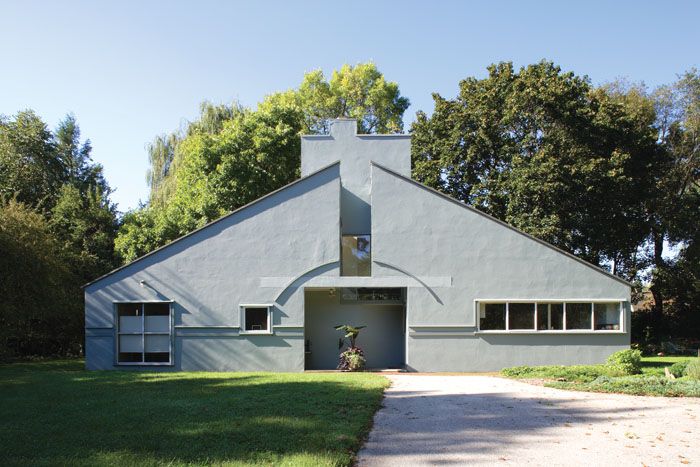 |
| |
1962, the Vanna Venturi's house, Philadelphia, USA, Robert Venturi |
| |
|
| |
 |
| |
1966, Theatre des Abesses, Paris, FRANCE, Vandenhove Charles |
| |
|
| |
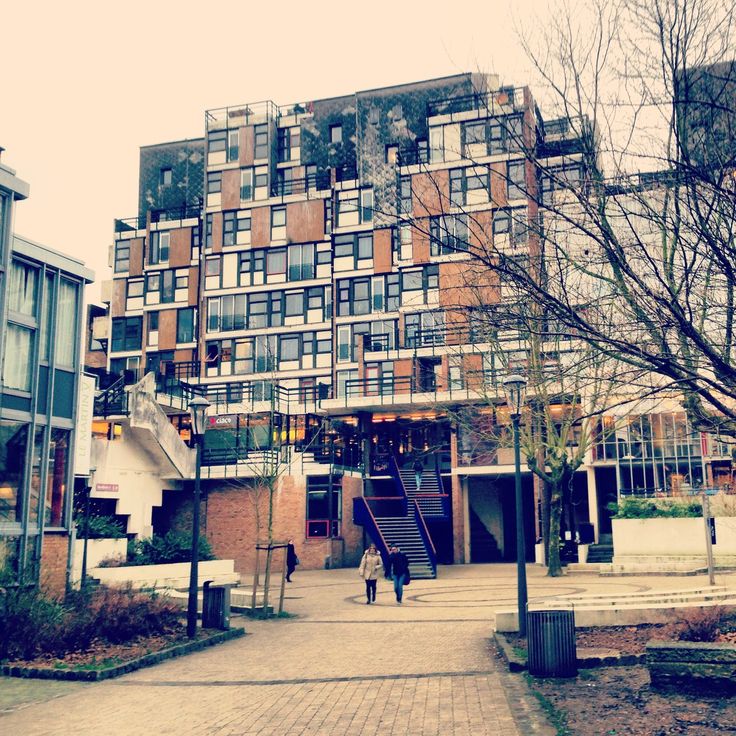 |
| |
1974, the Medical Faculty of the Catholic University of Louvain, Brussels, BELGIUM, Lucien Kroll |
| |
|
| |
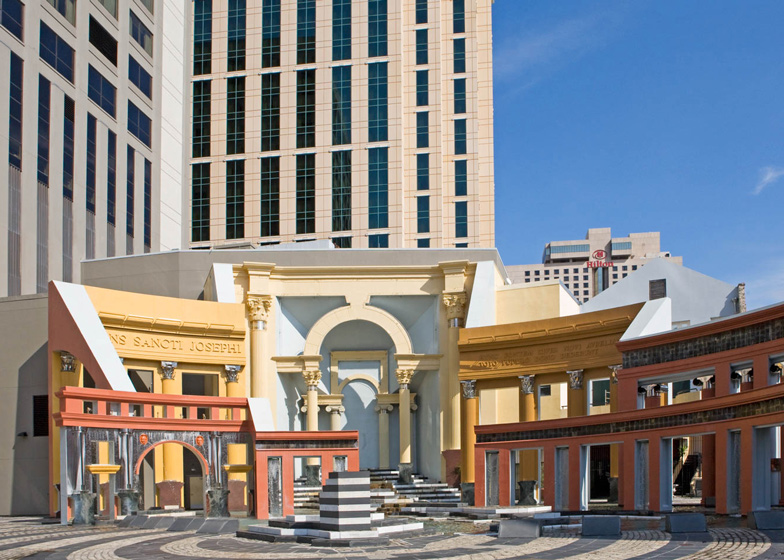 |
| |
1979, Piazza d’Italia, New Orleans, USA, Charles Moore |
| |
|
| |
 |
| |
1981, Byker housing project, Newcasde upon Tyne, UK, Ralph Erskine |
| |
|
| |
 |
| |
1982, Portland Public Service Building, Portland, Ohio, USA, Michael Graves |
| |
|
| |
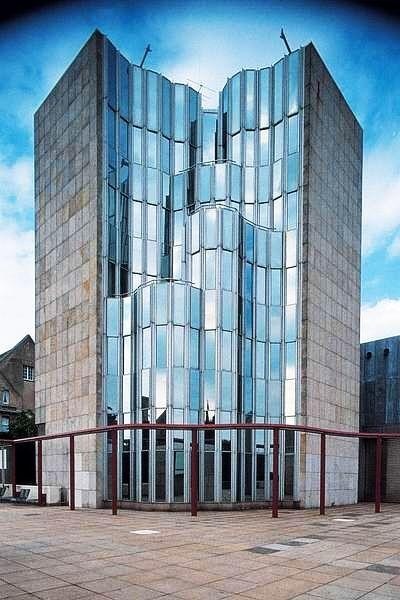 |
| |
1982, Abeitburg Museum, Mönchengladbach, Germany, Hans Hollein |
| |
|
| |
 |
| |
1983, Tsukuba Civic Center, Tsukuba, Japan, Arata Isozaki |
| |
|
| |
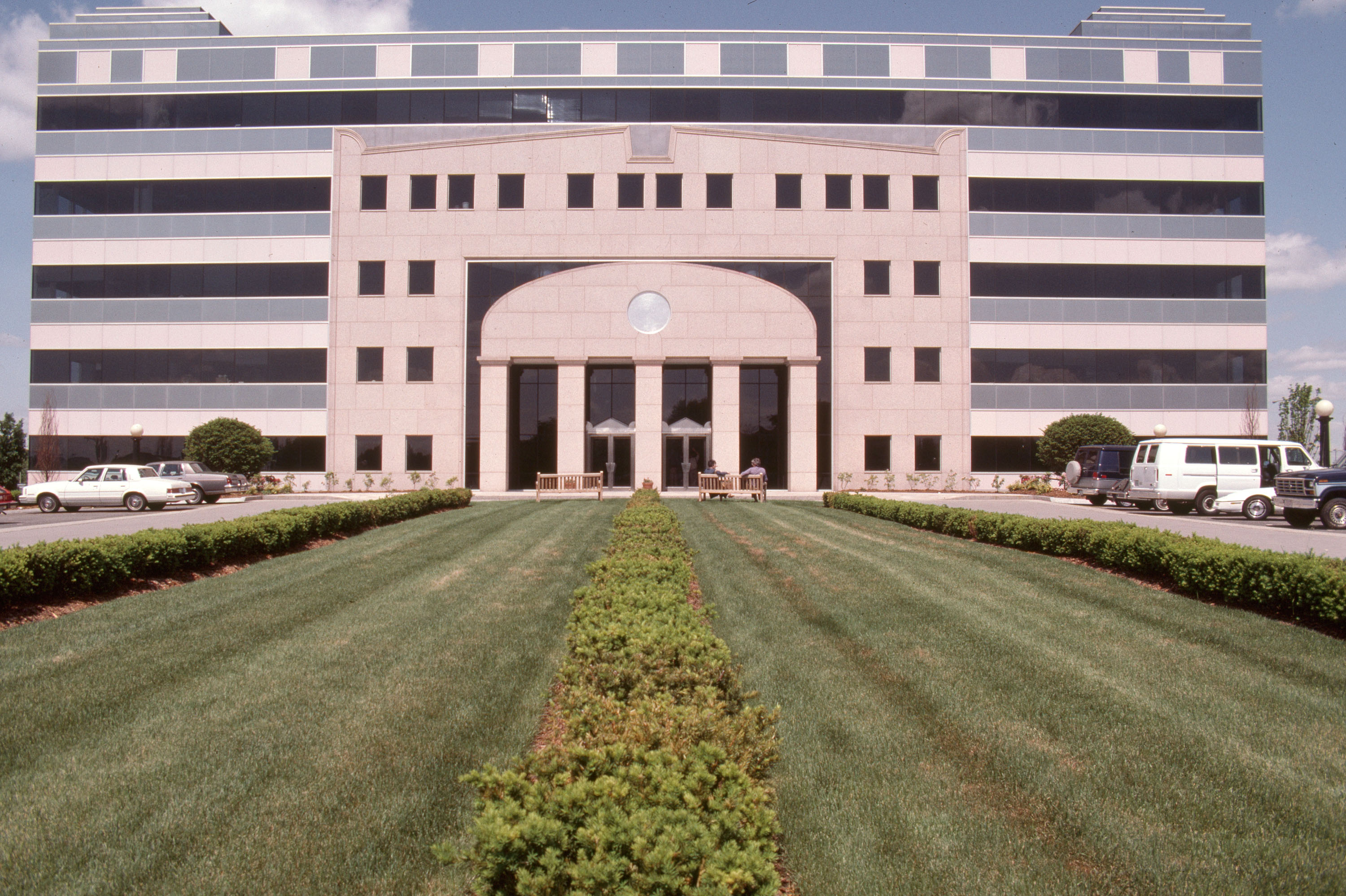 |
| |
1984, Point West Place, Framingham, Massachusetts, USA, Robert Stern |
| |
|
| |
 |
| |
1984, AT&T Building, New York, USA, Philip Johnson and John Burgee |
| |
|
| |
 |
| |
1985, Humana Tower, Louisville, Kentucky, USA, Michael Graves |
| |
|
| |
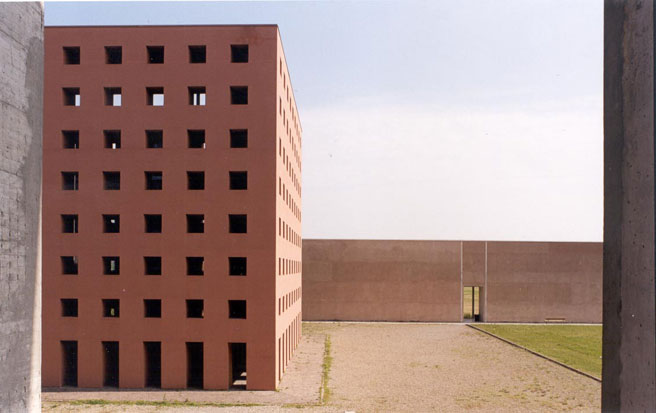 |
| |
1985, Modena Cemetery, Modena, Italy, Aldo Rossi |
| |
|
| |
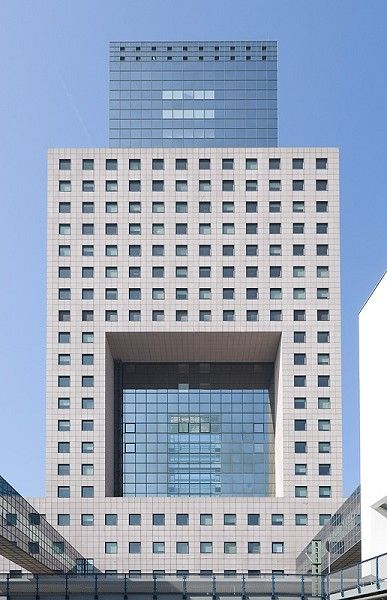 |
| |
1985, Deutsches Architektur Museum, Frankfurt am Main, GERMANY, Oswald Mathias Ungers |
| |
|
| |
 |
| |
1985-1992, Indian Mission to the United Nations, New York, USA, CHARLES MARK CORREA |
| |
|
| |
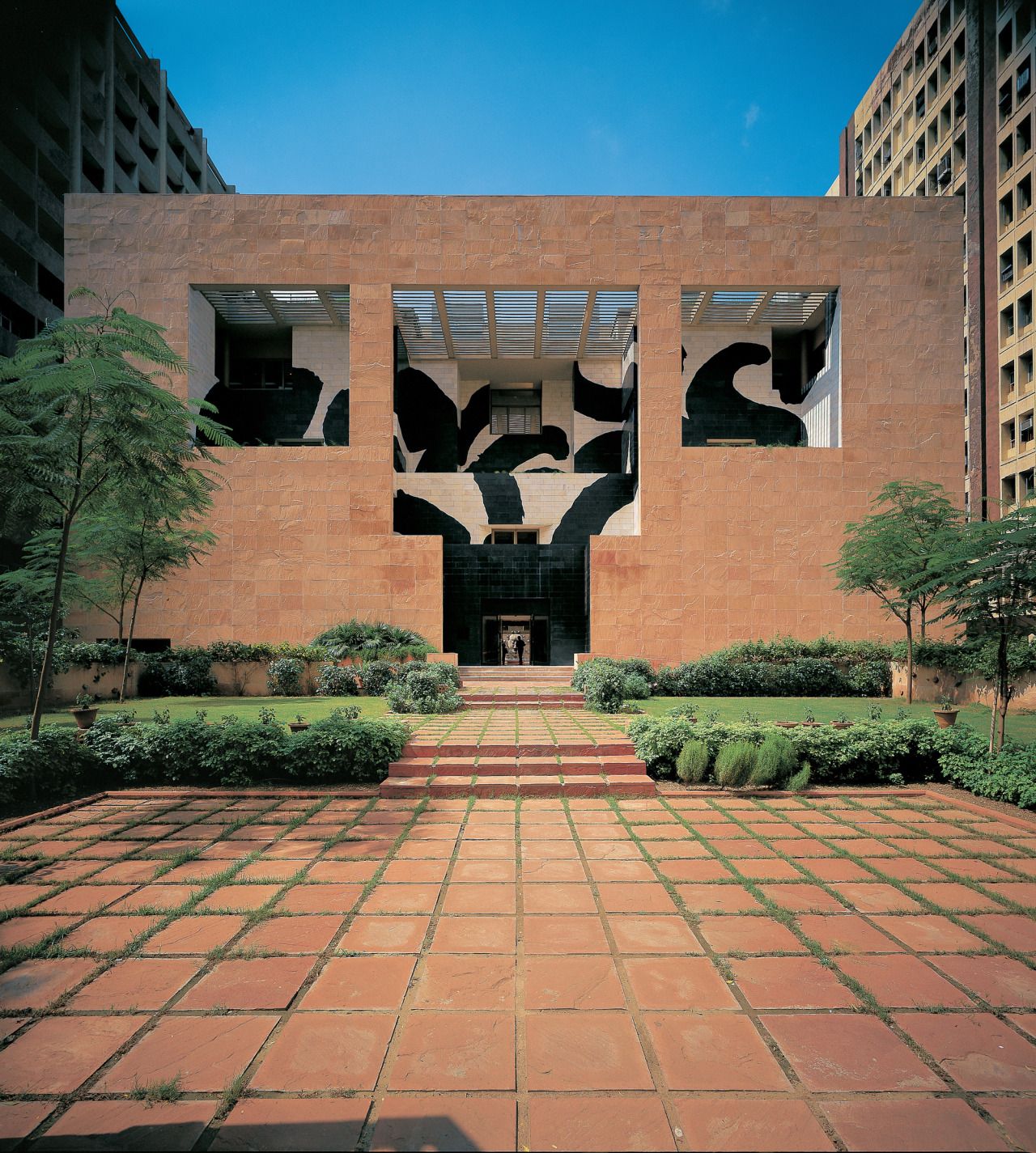 |
| |
1987-1992, British Council, New Delhi, INDIA, CHARLES MARK CORREA |
| |
|
| |
 |
| |
1989-2000, CHURCH AT PARUMALA, KERALA, INDIA, CHARLES MARK CORREA |
| |
|
| |
|
| |
|
| |
|
| |
|
| |
|
| |
|
| |
|
| ARCHITECTS |
|
| |
BOFILL, RICARDO
CORREA, CHARLES MARK
EISENMAN, PETER D.
ERSKINE, RALPH ESCALATOR
GEHRY, FRANK OWEN
GRAVES, MICHAEL
HOLLEIN, HANS
ISOZAKI, ARATA
PORTOGHESI, PAOLO
ROSSI, ALDO
VENTURI, ROBERT |
| |
|
| |
|
| |
|
| |
|
| |
|
| |
|
| |
|
| BUILDINGS |
|
| |
1985-1992, Indian Mission to the United Nations,
New York, USA, CHARLES MARK CORREA |
| |
|
| |
1987-1992, British Council, New Delhi, INDIA, CHARLES MARK CORREA |
| |
|
| |
1989-2000, CHURCH AT PARUMALA,
KERALA, INDIA, CHARLES MARK CORREA |
| |
|
| |
|
| |
|
| |
|
| |
|
| |
|
| |
|
| MORE |
|
| |
INTERNAL LINKS
Deconstructivism;
FURTHER READING
Jencks (1977) wrote the publication introducing the term Postmodernism in the architectural discourse. Jencks has later published a lot more on Postmodern architecture. Of these later publications, the lavishly published book from 1987 is most interesting, as in this publication Jencks narrows down Postmodernism to new classicism. Good surveys of Postmodernism in architecture can be found in Klotz 1988 and Ghirardo 1996. Portoghesi 1983 rather focuses on theoretical issues. Tzonis and Lefaivre 1976 is especially recommended for giving an overview of participatory and populist tendencies. General introductions into Postmodernist culture at large, also covering other fields (philosophy, visual arts, performance art, film, television, and so on) are Connor 1997 and Woods 1999, and both also offer very helpful bibliographies. Docherty 1993 is a very good reader collecting key texts in different fields. An early critique is formulated in several essays in Foster 1983, with influential texts by A.O.Habermas, Frampton, Crimp, and Baudrillard. Harvey 1990 and Jameson 1991 analyze Postmodernist culture from a point of view that is informed by neo-Marxist analytical tools and that stresses the links between cultural phenomena and the economic realities of late capitalism. Larson 1993 focuses on the links between architectural culture, economy, and the struggle for professional excellence. Watson and Gibson 1994 is a very interesting reader, collecting materials from architecture, urbanism, and geography.
Blake, Peter, Form Follows Fiasco: Why Modern Architecture Hasn’t Worked, Boston: Little, Brown and Company; Toronto: Little, Brown and Company, 1977
Connor, Steven, Postmodernist Culture: An Introduction to Theories of the Contemporary, Oxford: Blackwell; Malden, Massachusetts: Blackwell, 1989; 2nd edition 1997
Dethier, Jean (editor), Nouveaux plaisirs d’architectures: les pluralismes de la creation en Europe et aux Etats-Unis depuis 1968 vus a travers les collections du Deutsches Architekturmuseum de Francfort, Paris: Centre Georges Pompidou/CCI, 1985
Docherty, Thomas (editor), Postmodernism: A Reader, Brighton: Harvester Wheatsheaf, 1993
Foster, Hal (editor), The Anti-Aesthetic. Essays on Postmodern Culture, Seattle, Washington: Bay Press, 1983; reprinted in Britain as Postmodern Culture, London: Pluto, 1985
Frampton, Kenneth, “Towards a Critical Regionalism,” in The Anti-Aesthetic, edited by Hal Foster, Seattle, Washington: Bay Press, 1983, pp. 16–30 Ghirardo, Diane (editor), Out of Site: A Social Criticism of Architecture, Seattle, Washington: Bay Press, 1991
Ghirardo, Diane, Architecture after Modernism, London: Thames and Hudson; New York, Thames and Hudson, 1996
Habermas, Jürgen, “Modern and Postmodern Architecture” in Architecture Theory since 1968, edited by K.Michael Hays, Cambridge, Massachusetts, and London: MIT Press, 1998
Habermas, Jürgen, “Modernity—An Incomplete Project” in The Anti-Aesthetic, edited by Hal Foster, Seattle, Washington: Bay Press, 1983
Harvey, David, The Condition of Postmodernity, Oxford: Blackwell, 1990
Heynen, Hilde, Architecture and Modernity: A Critique, Cambridge, Massachusetts, and London: MIT Press, 1999
Jacobs, Jane, The Death and Life of Great American Cities, New York: Vintage Press, 1961
Jameson, Fredric, Postmodernism or, The Cultural Logic of Late Capitalism, Durham, North Carolina: Duke University Press, 1991
Jencks, Charles, The Language of Post-modern architecture, London: Academy Editions, 1977
Jencks, Charles, Post-Modernism: The New Classicism in Art and Architecture, New York: Rizzoli, and London: Academy Editions, 1987
Jencks, Charles, The Story of Post-Modernism: Five Decades of the Ironic, Iconic and Critical in Architecture, Wiley, 2012
Klotz, Heinrich (editor), Revision der Moderne: Postmoderne Architektur 1960–1980, München: Prestel Verlag, 1984
Klotz, Heinrich, The History of Postmodern Architecture, translated by Radka Donnell, Cambridge, Massachusetts: MIT Press, 1988
Larson, Magali Sarfatti, Behind the Postmodern Façade, Berkeley: University of California Press, 1993
Lyotard, Jean-François, The Inhuman: Reflections on Time, Cambridge: Polity Press, 1991
Lyotard, Jean-François, The Postmodern Condition: A Report on Knowledge, translated by Geoff Bennington and Brian Massumi, Manchester: Manchester University Press, 1984
Lyotard, Jean-François, The Postmodern Explained: Correspondence 1982–1985, Minneapolis: University of Minnesota Press, 1992
Moholy-Nagy, Sibyl, Native Genius in Anonymous Architecture, New York: Horizon, 1957
Moholy-Nagy, Sibyl, Matrix of Man: An Illustrated History of Urban Environment, New York: Praeger, 1968
Portoghesi, Paolo, Francesco Cellini, and Thomas Becker, The Presence of the Past: 1st International Exhibition of Architecture, the Corderia of the Arsenale, London: Academy Editions, 1980
Portoghesi, Paolo, Postmodern: The Architecture of the Postindustrial Society, New York: Rizzoli, 1983
Rapoport, Amos, House, and Culture, Englewood Cliffs, New Jersey: Prentice-Hall, 1969
Rossi, Aldo, The Architecture of the City, translated by Diane Ghirardo and Joan Ockman, Cambridge, Massachusetts, and London: MIT Press, 1982
Rowe, Colin and Fred Koetter, Collage City, Cambridge, Massachusetts, and London: MIT Press, 1978
Rudofsky, Bernard, Architecture without Architects: A Short Introduction to NonPedigreed Architecture, Albuquerque: University of New Mexico Press, 1964
Turner, John, “The Squatter Settlement: An Architecture that Works” Architectural Design, 38/8 (1968)
Turner, John, Housing by People: Towards Autonomy in the Built Environment, London: Marion Boyars, 1976
Tzonis, Alexander and Liane Lefaivre, “In the Name of the People,” Forum, 25/3 (1976)
Venturi, Robert, Complexity and Contradiction in Architecture, New York: The Museum of Modern Art, 1966
Venturi, Robert, Denise Scott Brown, and Steven Izenour, Learning from Las Vegas, Cambridge, Massachusetts, and London: MIT Press, 1972
Watson, Sophie and Keith Gibson (editors), Postmodern Cities and Spaces, Oxford: Blackwell, 1994
Woods, Tim, Beginning Postmodernism, Manchester and New York: Manchester University Press, 1999
Hans Hollein and postmodernism art and architecture in Austria, 1958-1985
The Politics of Modernism: Against the New Conformists
Five Faces of Modernity: Modernism, Avant-garde, Decadence, Kitsch, Postmodernism
After modern architecture
Architecture post mortem the diastolic architecture of decline, dystopia, and death
The language of post-modern architecture
New Moderns From Late to Neo Modernism
The End of Modernity: Nihilism and Hermeneutics in Post-modern Culture
Tokyo 1955-1970: A New Avant-Garde
Modernity and Its Other: A Post-Script to Contemporary Architecture (Studies in architecture & culture)
Ontology of Construction: On Nihilism of Technology in Theories of Modern Architecture: On Nihilism of Technology and Theories of Modern Architecture
|
| |
|
|

